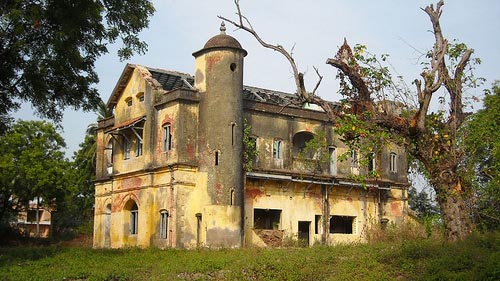Fort St. David

Information on Fort St. David (Cuddalore, Tamil Nadu) - History & Architecture
Fort St. David is located in the district of Cuddalore, in the state of Tamil Nadu, Southern India. At present, it is controlled by the Government of Tamil Nadu and its current condition is ruined state. It is a British Fort that is nearly hundred miles down south of Madras city on the Coromandel Coast of South India. It is one of the most sought after British Fort that is visited by domestic and foreign tourists who visit South India. This particular Fort is known for its historical and architectural significance in the history of India.
Fort St. David Architecture
Fort St. David is well-fortified Fort in Southern India that witness power struggles and political instability in this region of South India in the bygone eras. It lies on the bank of River named Gadilam that was used for moving goods and soldiers to the fort from the Bay of Bengal. The said Fort looked small when compared to other fort of South India but proved very important because of its strategic position. The fort complex had a good number of residential quarters, rooms for military camp, store rooms for arms and ammunitions, grand halls for conducting meetings, stables, common houses and other significant building structures. It was a well planned fort for good protection from enemies. The height of the walls of the fort largely varies as per the geographical terrain and waterfront in the surrounding. The entry gates of the fort need special mention because of its strongly built doors. The Fort had good water supply network from the nearby river and ponds. The fort had many secret underground tunnels for escape during emergency situations and circumstances.
Fort St. David History
Actually, Fort St. David was a small fort built by a Hindu Merchant to store goods in this particular region. The said fort is located on the bank of the river known as Gadilam. In 1677, after the successful capture of Gingee Fort by Shivaji, the Maratha ruler, this Fort fell into their hand. In 1690, the British East India Company in a successful manner bought Fort St. David from the Marathas. The said deal only included the Fort but also the nearby villages and towns surrounding the Fort areas. It was renamed as Fort St. David, after the patron Saint of Wales by the then Governor of Madras named Elihu Yale who belong to Weles. In 1756, Robert Clive directly served as the governor of this particular Fort.
According to the historians, in 1725, James Macrae was the governor of the fort who later became the Governor of the Madras Presidency. During his tenure, the fortifications were largely strengthened to a great extent. Fort St David directly became the British headquarters for the southern India in 1746. It was many times attacks by French forces under the leadership of Dupleix but they were repulsed successfully. Robert Clive was directly appointed its governor in 1756. Later in 1758, the French captured it. In 1785, the French passed it into British possession.
Fort St. David Tourism Importance
Fort St. David is mostly visited by foreign and domestic tourists throughout the year. It is one of the must-visit forts in south India because of its architectural and historical importance in the state of Tamil Nadu. This British and French occupied Fort has many tales to unfold to its visitors. The ruined condition of the fort speaks a volume about the bygone years of wars and neglect.
- Andaman Nicobar Monuments
- Andhra Pradesh Monuments
- Assam Monuments
- Bihar Monuments
- Chhattisgarh Monuments
- New Delhi Monuments
- Goa Monuments
- Gujarat Monuments
- Haryana Monuments
- Himachal Pradesh Monuments
- Jammu and Kashmir Monuments
- Karnataka Monuments
- Kerala Monuments
- Madhya Pradesh Monuments
- Maharashtra Monuments
- Odisha Monuments
- Punjab Monuments
- Rajasthan Monuments
- Tamil Nadu Monuments
- Telangana Monuments
- Uttar Pradesh Monuments
- West Bengal Monuments